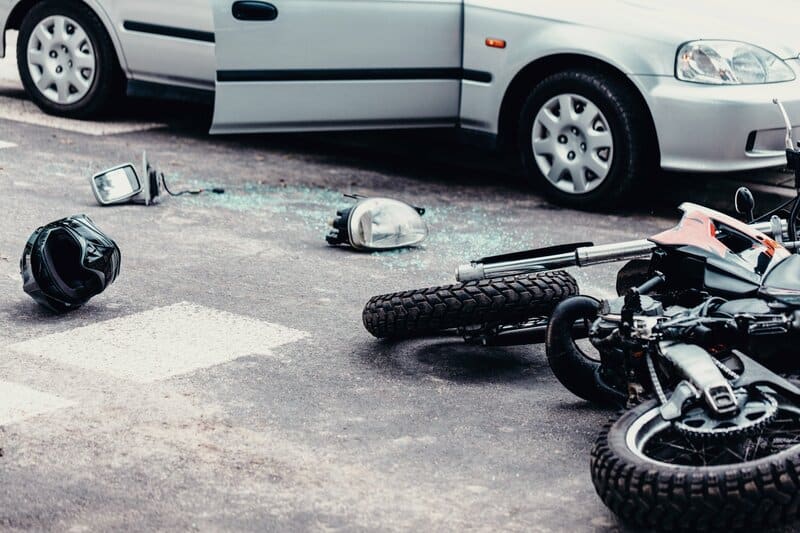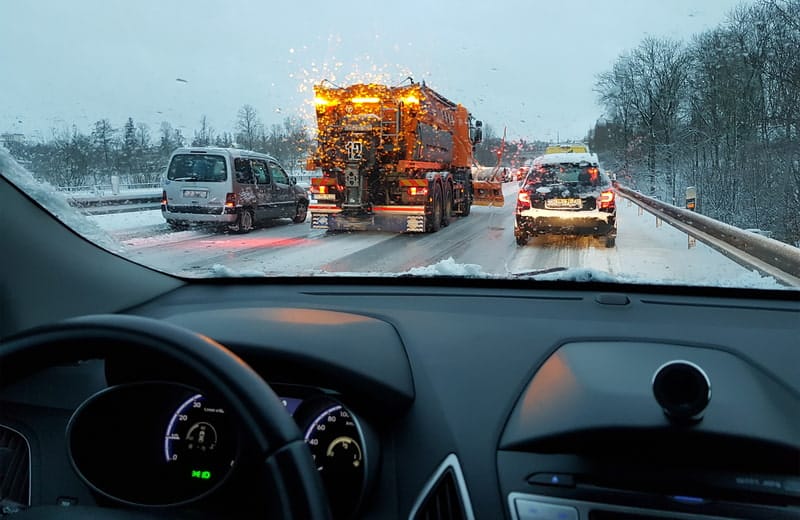Early projected traffic fatalities in the U.S. for the first 9 months of 2023 (January-September) reveal an estimated 30,435 people died in motor vehicle accidents. Compared to the 31,880 traffic fatalities of the first 9 months of 2022, that’s a 4.5 percent reduction. However, a study conducted by the Insurance Institute for Highway Safety predicts that there will be about 34,000 U.S. traffic fatalities in 2024.
Traffic data can help us understand why crash fatalities are increasing or decreasing and what drivers can do to keep themselves and their families safe. This article will focus specifically on Utah traffic statistics, facts, and road safety tips so you can better understand how to drive safely.
Utah Road Safety Statistics
The following data comes from the Utah Department of Public Safety.
2023 Utah Crash Statistics
- Total crashes: 63,865
- Crashes resulting only in property damage (no injury): 45,165
- Crashes resulting in injury: 18,448
- Crashes resulting in fatality: 252
- Total vehicle injuries in Utah: 26,551
- Total traffic fatalities in Utah: 281
Percentage of Crashes by Injury Severity
- No injury: 70.72%
- Possible injury: 15.57%
- Suspected minor injury: 11.08%
- Suspected serious injury: 2.23%
- Fatal: 0.39%
Total 2023 Crashes by Category

The following statistics divide the crash data into categories, which show the most common factors related to Utah accidents in 2023:
- Teen driver involved: 12,956
- Older driver involved: 9,060
- Holiday related: 8,534
- Speed related: 9,370
- Distraction related: 4,924
- Wild animal involved: 2,436
- Unrestrained (no seat belt) related: 2,103
- Motorcycle involved: 1,162
- Drowsy driving involved: 900
- Alcohol-related: 877
- Pedestrian involved: 938
- Bicycle involved: 549
- Domestic animal involved: 339
- Drug-related: 170
- Scooter/Skater related: 113
2 p.m. was the most common time for accidents (4,257 vehicle accidents), while 3 a.m. was the least common time (418 vehicle accidents). It makes intuitive sense that most accidents occur during the busiest times of day, and the data shows this to be true.
20% of the total accidents in Utah involved a teen driver. Drivers aged 13-20 were involved in 12,956 crashes, more than any other age group.
Distracted Driving
Distracted driving, which includes talking, texting, or eating, was the fifth-highest cause of Utah accidents in 2023. Many drivers don’t understand how dangerous distractions can be while driving.
- In 2021, distracted driving led to 3,522 deaths nationwide.
- Nine people in the United States are killed daily in crashes involving distracted drivers.
- At 55 MPH, sending or reading a text is like driving the length of a football field with your eyes closed.
Winter Driving
When winter comes around each year, driving in poor conditions becomes a concern for Utah drivers. In 2023, 9,332 crashes occurred involving adverse weather in Utah. Those accidents resulted in 2,304 injuries and 18 fatalities. Nearly half of the accidents involving adverse weather were related to speed, suggesting that unsafe speeds present a significant issue on slick roads.
Safety Tips for Driving During the Winter

Snowstorms can make driving more dangerous during the winter. Icy roads are the #1 weather-related danger in the country and cause 536,731 traffic accidents each year nationwide. The following tips for driving during winter weather come from the Utah Department of Public Safety.
1. Drive Slower Than the Speed Limit
Driving too fast is the primary cause of crashes in the winter. Drivers with all-wheel or four-wheel drive often feel overly safe and are more prone to exceeding safe speeds. If roads are wet, snowy, or icy, you should drive below the posted speed limit.
2. Avoid Sudden Braking or Acceleration
Take turns slowly and start breaking well before you need to stop to give yourself enough time to reduce speed. If you travel 35 MPH on dry pavement, it will take 60 to 100 feet to come to a stop. During bad weather, that distance can double. Icy streets are even worse, requiring a minimum of 600 feet.
Stay safe and avoid sudden turns on icy roads.
3. Increase the Distance Between You and Other Cars
Tailgating is always risky and becomes even more dangerous when the road is slick. Leave enough space between your car and the car in front of you so you have time to react without swerving or slamming the brakes.
Because the road behind an active snow plow is usually clear of snow buildup and ice, it’s safest to follow a snowplow if you find one. If you need to pass an active plow, use extreme caution and never pass on the right.
4. Be Careful When Changing Lanes
Snow and slush can form slippery ridges between lanes that may cause you to lose control. Before merging, check for any nearby cars. If possible, avoid merging, or wait for an ice-free area before changing lanes.
5. Always Buckle Up
Seat belts save lives. Over 2,103 of all motor accidents in Utah last year involved unrestrained drivers or passengers, resulting in 77 fatalities.
Using a seatbelt as a front seat passenger reduces your risk of fatal injury by 45% and moderate-to-severe injury by 50%. Of the 26,325 traffic fatalities in 2021, 50% were not wearing seatbelts. Buckling up is the most effective action to protect yourself in a crash.
6. Buckle Any Children Before Putting Their Coats On
In the winter months, parents typically dress their kids in thick coats. However, winter coats may interfere with children’s ability to fit in their car seats. To ensure that young children remain safe, buckle them into their seats before draping a coat or blanket over them. This will ensure that they are buckled in the safest possible way.
Driving too fast is the primary cause of crashes in the winter. Drivers with all-wheel or four-wheel drive often feel overly safe and are more prone to exceeding safe speeds. If roads are wet, snowy, or icy, you should drive below the posted speed limit.
NHTSA Safe Driving Tips

- Stock your vehicle before you leave. In the event of an accident or other emergency, you will want to have an emergency roadside kit on hand. You can view the NHTSA’s recommended emergency kit here.
- Stay alert. Monitor your gas and oil levels, and take breaks on long trips to stretch, eat food, switch drivers, or respond to calls and texts.
- Avoid dangerous behavior. Don’t text, drink, eat, or do anything while driving that takes your focus off the road. It’s also essential to pay attention to speed limits and other traffic signs and follow the rules of the road.
Increase Neighborhood and Highway Safety at Interwest Safety Supply
At Interwest Safety Supply, we understand the importance of traffic safety. We have supplied high-quality traffic safety equipment to the government and highway construction industry for over 40 years, and our experienced staff members are committed to providing you with fast and dependable service.
As a 3M certified sign fabricator, we produce test-proven and effective safety equipment. To view our product line or to learn more, click here.







